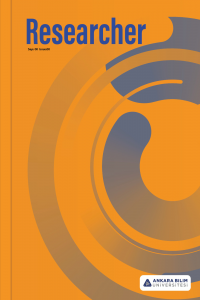Alternatif Avrupa Birliği Üyelik Modelleri ve Bu Modellerin Birleşik Krallık ile Türkiye için Uygunluğu
İkinci Dünya Savaşı’ndan sonra Avrupa kıtası üzerinde bir barış projesi olarak başlatılan Avrupa Birliği, en başarılı ekonomik ve politik uluslararası örgütlerden biridir. Altı kurucu üyeyle başlayan bu örgüt, ilerleyen yıllarda birçok ülkeyi daha cezbetmiş ve bugün 28 üye sayısına ulaşmıştır.. Ancak son dönemlerde Avrupa Birliği’nin karşılaştığı iç ve dış kaynaklı sorunlar bazı üye devletlerin Avrupa Birliği’nin uyguladığı göç politikası ya da son dönemde uyguladığı katı ekonomik politikalar gibi bazı politikaları eleştirmeye başlamalarına sebep olmuştur. Sonunda da, Birleşik Krallık Avrupa Birliği’nden ayrılmak için birçok farklı sebep öne sürmüş ve Brexit referandumu ile ayrılık yoluna girmiştir. Daha önce eşi benzeri olmayan bu ayrılık durumu Avrupa Birliği ile Birleşik Krallık’ın gelecekteki muhtemel ilişkisi gibi yeni soruları gündeme getirmiştir. Bu makalede, Avrupa Birliği-Birleşik Krallık arasında gelecekte kurulacak muhtemel ilişki modelleri, örneğin şuan da var olan İsviçre modeli veya Norveç modeli, ya da yarı-üyelik gibi tamamen yeni bir model, incelenmiş ve bu yeni modelin Türkiye için uygunluğu tartışılmıştır
Anahtar Kelimeler:
Brexit Alternatif Modeller Uygunluk
Alternative EU Membership Models and Their Suitability for the United Kingdom and for Turkey
The European Union EU , which was started as a peace project on the European continent after WWII, has been one of the most successful economic as well as political international organizations. Starting with six founding member states, it has attracted several other countries and currently it has 28 member states. However, current internal and external crises that the EU has suffered from have caused some member states to complain about some of the applications in the EU such as the migration policy or the strict economic policies followed recently. Finally, the UK decided to break up with the EU mentioning several distinct reasons to leave the EU and with the Brexit referendum, the UK citizens decided to exit the EU. This unprecedented event has brought forward new questions such as the future relationship between the EU and the UK. In this article, the possible forms of the EU-UK relationship already existing Swiss Model, Norwegian Model or a totally new relationship will develop with the UK such as half membership are discussed. The suitability of this new relationship for Turkey will be examined as well.
Keywords:
Brexit Alternative Models Suitability,
___
- Axford, B., Browning, G. K., Huggings, R. & Rosamond, B. (2002). Politics: An Introduction. (2nd edition). s. 504. New York and London: Routledge Taylor and Francis Group.
- Andersen, S.S. & Sitter, N. (2006). Differentiated integration. ARENA Center for European Studies. Working Paper. (Erişim adresi: http://www.sv.uio.no/arena/english/research/publications/arena-working-papers/2001- 2010/2006/wp06_05.pdf), (Erişim Tarihi: 29 Aralık 2016).
- Aydın-Düzgit, S. (2016). Brexit: What, why and how. IPC-Mercator Policy Brief. (Erişim adresi: http://ipc.sabanciuniv.edu/wpcontent/uploads/2016/06/Brexit_WhatWhyHow_Senem AydinDuzgit.pdf), (Erişim Tarihi: 29 Aralık 2016).
- Dhingra, S. and Sampson, T. (2016a). CEP Brexit analysis: Life after BREXIT: What are the UK’s options outside the European Union. Center for Economic Performance (CEP): London School of Economics and Political Science (LES). (Erişim adresi: http://cep.lse.ac.uk/pubs/download/brexit01.pdf), (Erişim Tarihi: 29 Aralık 2016).
- Dhingra, S., Ottaviano, G., Sampson, T. & Reenen, J. (2016b). CEP Brexit analysis no 2: The consequences of Brexit for the UK trade and living standards. Center for Economic Performance (CEP): London School of Economics and Political Science (LES). (Erişim adresi: http://cep.lse.ac.uk/pubs/download/brexit02.pdf), (Erişim Tarihi: 29 Aralık 2016).
- Dyson, K. & Sepos, A. (2010). Which Europe? The politics of differentiated integration: Differentiation as design principle and as tool in the political management of European integration. Palgrave Studies in European Union Politics. (Erişim adresi: http://www.palgraveconnect.com/pc/doifinder/view/10.1057/9780230289529), (Erişim Tarihi: 30 Aralık 2016).
- HM Government. (2016). Alternatives to membership: possible models for the United Kingdom outside the European Union. (Erişim adresi: http://paybefore.com/wpcontent/uploads/2016/06/Alternatives_to_membership_- _possible_models_for_the_UK_outside_the_EU.pdf), (Erişim Tarihi: 28 Aralık 2016).
- Holzinger, K. & Schimmelfenning (2012). Differentiated integration in the European Union many concepts, sparse theory, few data. (Erişim adresi: http://www.tandfonline.com/doi/full/10.1080/13501763.2012.641747?scroll=top&need Access=true ), (Erişim Tarihi: 27 Aralık 2016).
- Oliver, T. (2016). European and international views of Brexit. Journal of European Public Policy: Routledge Taylor & Francis Group, United Kingdom. (Erişim adresi: http://www.tandfonline.com/doi/abs/10.1080/13501763.2016.1174534?journal Code=rjpp20), (Erişim Tarihi: 27 Aralık 2016).
- Piris, J. (2016). If the UK votes to leave: the seven alternatives to EU membership. Center for European Reforms. (Erişim adresi: https://www.cer.org.uk/sites/default/files/pb_piris_brexit_12jan16.pdf), (Erişim Tarihi: 28 Aralık 2016).
- Schimmelfennig, F., Leuffen, D. & Rittberger, B. (2014). The European Union as a system of differentiated integration: interdependence, politicization and differentiation. Political Science Series - Working Paper No. 137. (Erişim adresi: https://www.ihs.ac.at/publications/pol/pw_137.pdf), (Erişim Tarihi: 30 Aralık 2016).
- Slaughter and May. (2016). Brexit Essentials: Alternatives to EU Membership. (Erişim adresi: https://www.slaughterandmay.com/media/2535258/brexit-essentials-alternatives-to-eumembership.pdf ), (Erişim Tarihi: 28 Aralık 2016).
- Stanford, M. (2016). After Brexit, only one thing can keep Britain Together: the Norway model. (Erişim adresi: http://www.telegraph.co.uk/news/2016/06/27/after-brexit-onlyone-thing-can-keep-britain-together-the-norway/), (Erişim Tarihi: 30 Aralık 2016).
- Taub, A. (2016). Brexit explained: 7 questions about what it means and why it matters. (Erişim adresi: http://www.nytimes.com/2016/06/21/world/europe/brexit-britain-euexplained.html?r=0), (Erişim Tarihi: 27 Aralık 2016).
- Üründül, P. (2016). Brexit: The impact on the EU and Turkey. (Erişim adresi: http://www.bitaf.org/brexit-impact-on-the-eu-and-turkey/), (Erişim Tarihi: 3 Ocak 2017).
- Watt, N. (2016). Four alternatives to EU membership rejected by the government. (Erişim adresi:https://www.theguardian.com/politics/2016/mar/02/alternatives-to-eumembership-government-dossier-key-points), (Erişim Tarihi: 30 Aralık 2016).
- ISSN: 2717-9494
- Yayın Aralığı: Yılda 2 Sayı
- Başlangıç: 2013
- Yayıncı: Ankara Bilim Üniversitesi
Sayıdaki Diğer Makaleler
Dokuma ve Motif Özellikleri Açısından Sembolik Değer Olarak Osmanlı Padişah Kaftanları ve Şifreleri
Ufuk GERGERLİOĞLU, Robert W MCGEE
Umut Tolga GÜMÜŞ, Tarık DAĞDELEN
Cansu CANSIZ, Mehmet Ali ÇAKIR
Analojilere Yönelik Bir Tutum Ölçeği
Demet YİĞİT, Ümmügülsüm BOZKURT
